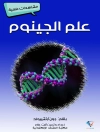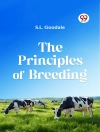This book provides an overview of the types, sources, and applications of stem cells in regenerating various ocular tissues, with a perspective on both potential applications of stem cells and possible challenges. The scope of the chapters include both preclinical and clinical applications, including stem cell-derived therapies based on endogenous tissue repair; stem cell transplantation and cell replacement therapy; gene therapy; and in vitro disease modelling. Additionally, the volume presents applications in both anterior and posterior ocular disease, with a particular focus on diseases of the ocular surface, cornea, limbus, and retina, including inherited retinal dystrophies as well as acquired diseases, such as age-related macular degeneration. Regenerative Medicine and Stem Cell Therapy for the Eye is an ideal book for advanced researchers in stem cell and ocular biology as well as clinical ophthalmologists, and will be of interest to readers with backgrounds indevelopmental biology and bioengineering.
This book also
- Skillfully reviews cutting-edge advances in stem cell biology as applied to regenerative medicine and ocular disease
- Provides expert viewpoints on key hurdles and challenges to successful implementation of stem cell-derived therapies in the clinical domain
- Offers a multi-disciplinary, broad understanding of cell-based therapies for ocular diseases by incorporating perspectives from biomedical scientists, physicians, and engineers
- Examines the connection between cell therapy and gene editing, in particular relation to ocular disease
Table of Content
Photoreceptor cell replacement therapy from stem cells.- Human Pluripotent Stem Cells as In Vitro Models for Retinal Development and Disease.- Clinical Applications of Limbal Stem Cells for Regenerative Medicine.- Bioengineered and Regenerative Medicine Strategies for Retina Repair.- Stem Cell Therapy and Regenerative Medicine in the Cornea.- Overview of Cells and Animal Models use for Retinal Stem Cell Research.- Limbal stem cells and the treatment of limbal stem cell deficiency.- Retinal ganglion cell replacement – A bridge to the brain.- Index.
About the author
Brian Ballios, M.D., Ph.D., Senior Research Associate and Resident Physician in the Department of Ophthalmology and Vision Sciences, University of Toronto, received his B.Sc.Eng. in Engineering Chemistry from Queen’s University in 2007. He then completed a combined MD/Ph D Program at the University of Toronto in 2015. During his graduate work, he developed new approaches to the transplantation of stem cells and their progeny for the treatment of retinal degeneration. His interests lie at the intersection of retinal neurobiology and applied science, as related to stem cell biology and bioengineering. He developed the first injectable biomaterial-based delivery system for stem cell transplantation in the retina. In 2016, he joined the Department of Ophthalmology and Vision Sciences as a Senior Research Associate, while also completing an ophthalmology residency.
Michael Young, Ph.D., Associate Scientist at the Schepens Eye Research Institute, received his BS degree in behavioral neuroscience from the University of Pittsburgh in 1989. He then received his Ph D in anatomy/neuroscience from the University of Cambridge in 1995. A postdoctoral fellowship at the Institute of Ophthalmology, University College, London in 1995 was followed by a two-year postdoctoral fellowship at the Massachusetts Institute of Technology, Department of Brain and Cognitive Sciences. In 1998, Young joined the Schepens Eye Research Institute as an Investigator. He was elected the Director of the Minda de Gunzburg Center for Ocular Regeneration. In 2008, he was promoted to Associate Professor in the Department of Ophthalmology, Harvard Medical School. He is now also Co-director of the Ocular Regenerative Medicine Institute at MEE/HMS.












